Mangroves are unique, resilient plants typically found along coastlines in tropical and subtropical regions. Known for their complex root systems and vital role in coastal ecosystems, many people are curious whether mangrove plants can be grown at home.
The answer is yes! Believe it or not, mangroves are not only extremely resilient but also are the only plant with wooded-bark that can easily adapt to saltwater, freshwater, or brackish water.
Mangroves live in a wide variety of water conditions out in nature so with the right care and setup, you can grow mangroves at home, bringing a touch of the coastal ecosystem into your living space. Here’s how.
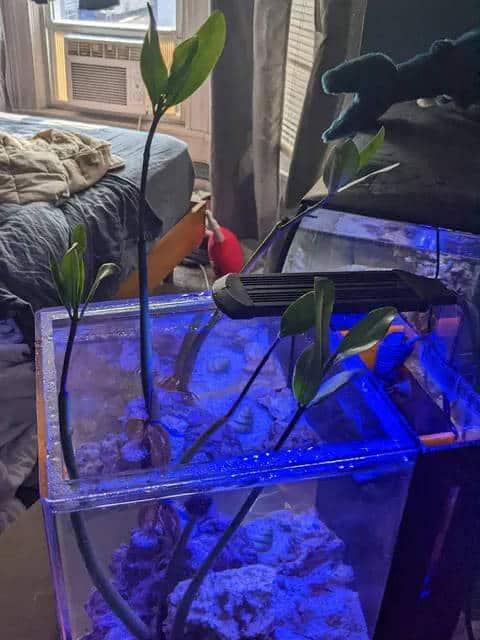
What are Mangroves? Mangroves are salt-tolerant trees and shrubs that thrive in coastal environments where most other plants cannot survive. They are famous for their complex root systems that can stabilize shorelines and provide habitat for a wide range of marine life.
Can Mangroves Thrive Indoors?
Yes, mangroves can thrive indoors, particularly in aquariums and large containers. Here’s what you need to know to successfully grow mangroves at home:
Step 1: Choose the Right Mangrove Species
The most common species for home growing is the Red Mangrove (Rhizophora mangle). Red mangroves are relatively hardy and can adapt well to indoor environments, making them ideal for beginners.
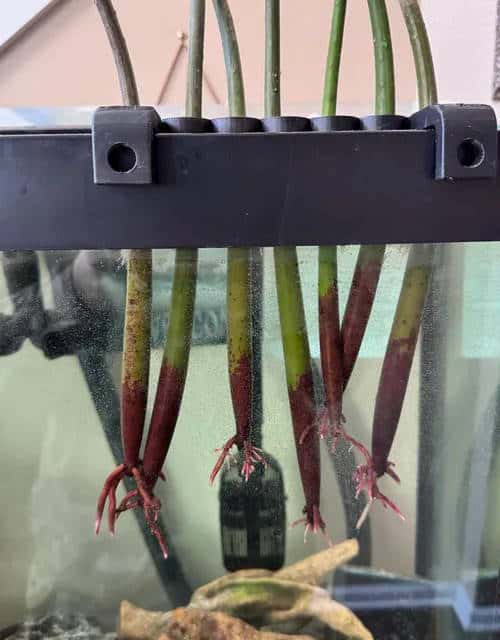
Step 2: Select the Appropriate Setup
You can grow mangroves in a variety of setups, including:
- Aquariums: Mangroves can be grown in both freshwater and saltwater aquariums. They can help filter the water, stabilize pH levels, and create a more natural environment for fish and other aquatic life.
- Pots and Containers: Mangroves can also be grown in pots filled with a mix of sand, soil, and perlite. Ensure that the pot has good drainage to prevent waterlogging.
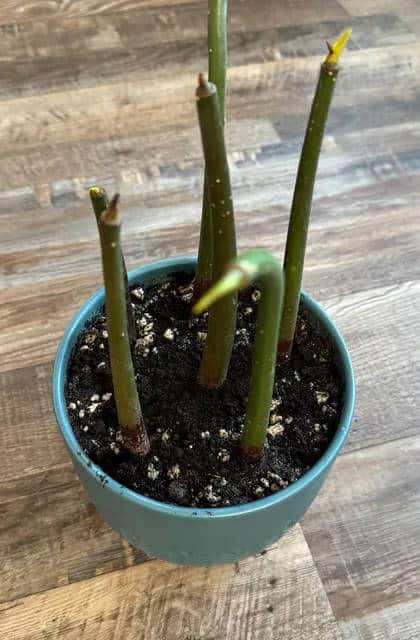
Step 3: Planting the Mangrove Propagules
- Soak the Propagules: Once you receive your plants, soak the mangrove propagule roots in room temperature fresh water for a few days to encourage root growth.
- Planting: In an aquarium, insert the propagule’s bottom into the substrate, leaving the top exposed above the water. In a pot, plant the propagule in the soil mix, with the top part above the soil line.
Step 4: Care and Maintenance
- Lighting: Mangroves require plenty of light to thrive. Place your mangrove setup near a window where it will receive indirect sunlight or use a grow light if natural light is insufficient.
- Watering: In an aquarium, maintain consistent water levels. If growing in a pot, water regularly to keep the soil moist, mimicking the mangrove’s natural tidal environment.
- Fertilizing: Use a balanced, water-soluble fertilizer every 4-6 weeks to ensure the mangrove receives the necessary nutrients.
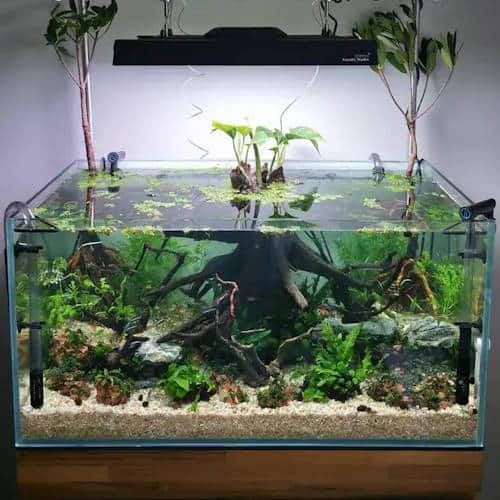
Common Challenges and Solutions
- Yellowing Leaves: This can be a sign of nutrient deficiency. Ensure your mangrove is receiving adequate light and nutrients.
- Broken Roots: If you decide to move your plant after its roots have been established, you run a risk of breaking the roots off. It’s not the end of the world one or two roots break off, but if too many main roots break, the plant will become droopy for a couple months and may lose some leaves and possibly a branch or two.
Step 5: Enjoying Your Home Mangrove
Mangroves are slow-growing plants, so patience is key. Over time, your mangrove will develop a complex root system and grow into a beautiful, hardy plant. Not only will it serve as a unique indoor plant, but it will also contribute to better water quality in aquariums and provide a natural habitat for small marine life.
Conclusion
Growing mangroves at home is a rewarding experience that brings a piece of the coastal environment into your living space. Whether you choose to grow them in an aquarium or a container, with the right care, your mangroves can thrive and add a unique touch to your home.
If you’d like more information on mangroves, don’t forget to sign up to get your Free Mangrove Care Guide at the bottom of this page which will give you detailed step-by-step instructions on everything you need to know before adding a mangrove plant to your aquarium.
Best seller products
-
18”-24” Red Mangroves With Roots & 2-4 Leaves
Price range: $34.99 through $87.99 -
28″ Red Mangrove Tree – Fully Mature Plant
Price range: $0.00 through $230.00 -
10”-14” Red Mangroves With Roots & 2-4 Leaves
Price range: $19.99 through $47.99 -
30″ Red Mangrove Tree – Fully Mature Plant
Price range: $0.00 through $180.00 -
Red & Oriental Mangrove Combo Bundle
Price range: $29.99 through $44.99 -
[RARE] Orange Oriental Mangroves Propagule Seeds
Price range: $19.99 through $79.99
 Cart is empty
Cart is empty 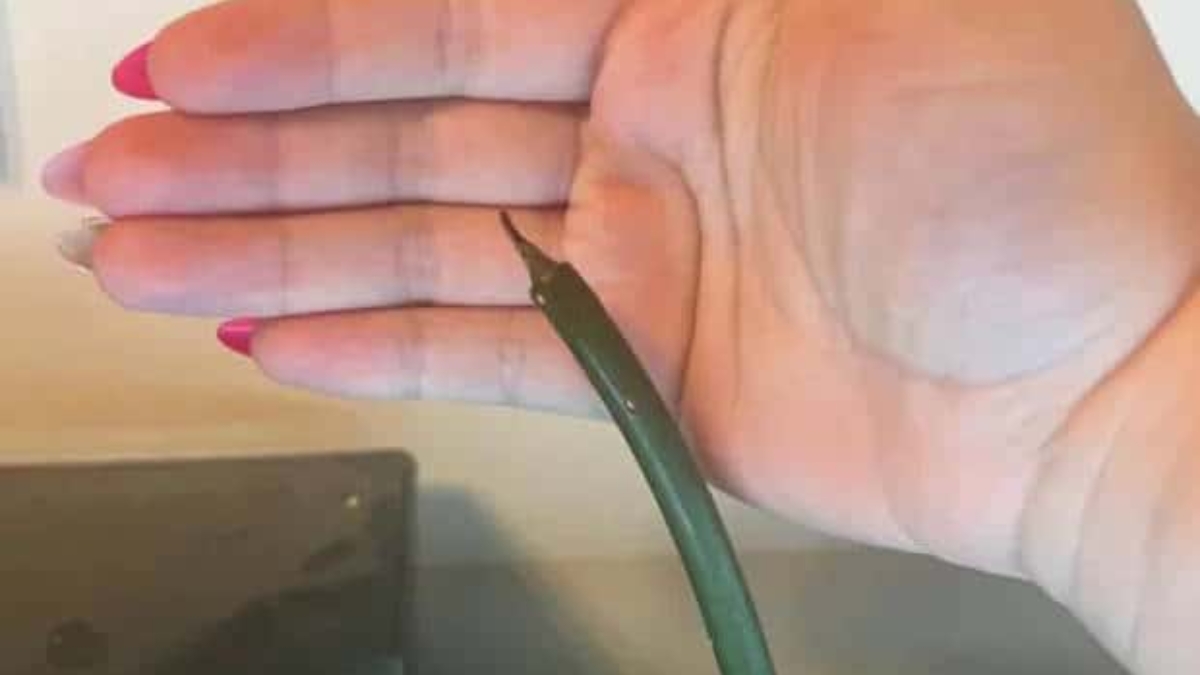



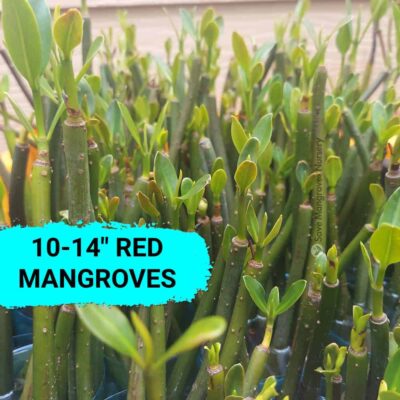
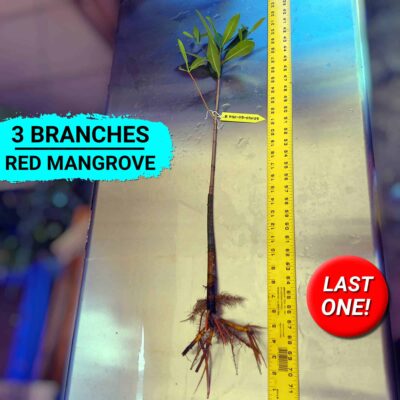
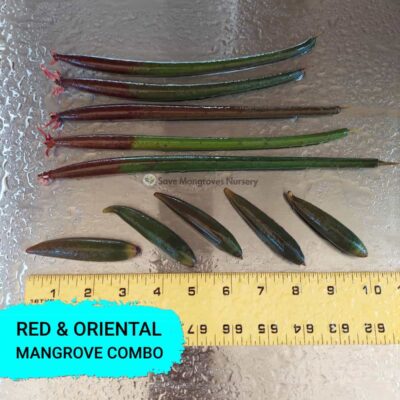
![[RARE] Orange Oriental Mangroves Propagule Seeds](https://savemangroves.com/wp-content/uploads/2025/07/Oriental-Mangrove-Seeds-Save-Mangroves-Nursery-400x400.jpg)
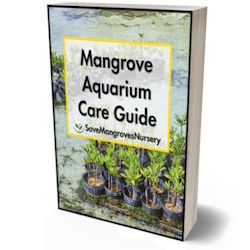
[…] Are you interested in growing your very own mangrove plant? Check out this article we wrote on Can You Grow Mangroves At Home? […]
[…] Want more information on growing mangroves at home? Check out this article we wrote: Can You Grow Mangroves At Home? […]